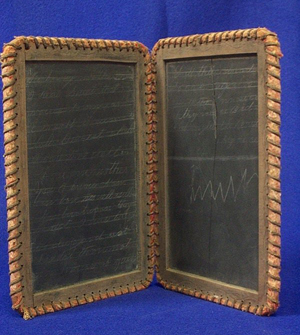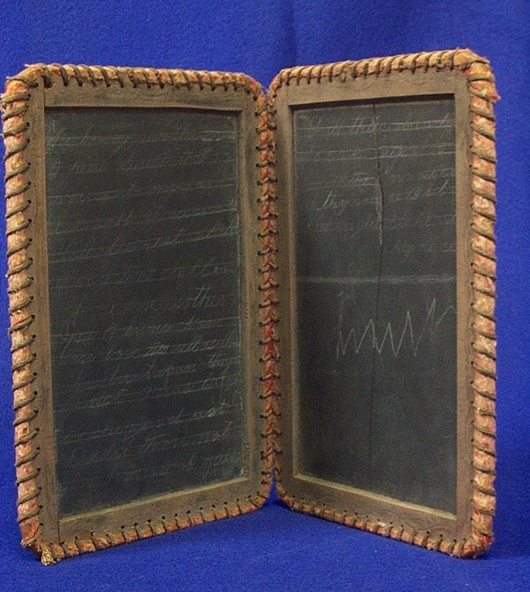
It’s been 63 years since Arlene Carney put down the chalk for the last time at the Ulster No. 3 School, but once a year she still gives a history lesson. The former educator doesn’t want people to forget what it was like to learn and work in a one-room schoolhouse.
Every Labor Day weekend, Carney resurrects the era during the Cedar Valley Engine Club’s annual Threshers Reunion. The school was moved about two miles north in 1993 to the club’s grounds west of Charles City.
“Teaching is just something I have to do,” Carney said. “I don’t want people to lose this part of history. I make it come alive.”
Carney won’t insist that students sit in antique wood desks, practice penmanship or study arithmetic. Instead, she’ll take visitors on an educational journey before pencil and paper were replaced by laptop computers.
Learning and working in a one-room school wasn’t always easy, Carney said, but it was an experience she and former student Betty Griffin cherish.
Carney taught children through eighth grades from 1943-48, the final two at Ulster No. 3. She was forced to quit when she got married.
The 85-year-old recalls stoking the furnace with coal, wood or corncobs to warm the drafty school, which was built in the late 1800s. Besides teaching, Carney served as custodian, nurse, cook and counselor.
If the school needed teaching supplies or visual aids, Carney was expected to buy them. She made $90 to $95 a month teaching eight to 13 children.
Teachers have it easy today, Carney said, compared to her workload. The school day was 9 a.m. to 4 p.m. from September through May.
“Students got a good education. I wouldn’t want to trade it for anything in the world. I have so many wonderful memories and friends.”
Griffin, 82, considers her former instructor among her closest friends—and a great teacher. She helped Carney over the Labor Day weekend.
“She’s (my) teacher. I still have to do what she says,” Griffin said.
Students had to literally work, at times, to get an education. Griffin remembers walking a quarter-mile or more to a nearby farmhouse to fetch water. Students took turns carrying jugs of water every day.
The bathroom was his and her outhouses. Going in the dead of winter wasn’t fun, Griffin recalls.
“Sometimes during Halloween they got tipped over. I never did that,” she said.
Still, the good outshined the bad, and Griffin feels she got a good education. Her eighth-grade diploma hangs on the wall at the school.
Students generally cared for each other, as well. In the one-room setting, older kids often helped younger classmates with their studies.
“We were family,” Griffin added.
Carney, 17 when she started, wasn’t much older than many of her students but she served as a role model. Griffin’s mother died when she was 12, so she looked up to her teacher.
The mutual respect and love for her students inspires Carney to preserve school memories.
For six decades Carney saved kids’ art projects, which now line the school’s walls. She spent hours organizing books, some dating to the mid-1800s, for display.
A lesson plan from 1947 hangs on the back wall, along with class pictures and historical photos. The U.S. flag has 48 stars.
“I’ll quiz people what two stars are missing,” Carney said. “Some don’t know, so we’re still teaching people.”
Few one-room schoolhouses remain. Floyd County had about 70 spread out in 12 townships.
Ulster No. 3 closed in 1956. Griffin persuaded the previous owner not to burn the building and the Cedar Valley Engine Club to preserve the structure.
Club member Mike Shanks of Nora Springs said Griffin didn’t have to twist too many arms. The school fits in perfectly with the organization’s mission: preserving Iowa’s rural heritage.
The Threshers Reunion is known for working exhibits, from threshing oats to shelling corn. Hundreds of pieces of vintage farm equipment are displayed.
The school, which attracts more than 500 visitors during the show, fits right in, Shanks said.
“It’s one of our most popular exhibits. Heck, we have one of the original teachers,” he said. “It’s what country life was all about.”
Copyright 2011 Associated Press. All rights reserved. This material may not be published, broadcast, rewritten, or redistributed.
AP-WF-09-05-11 2104GMT
ADDITIONAL IMAGE OF NOTE



